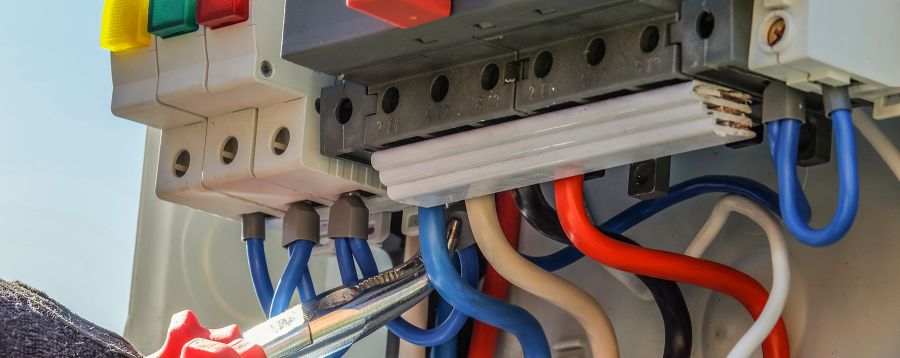
Safety Tip: Working with Electricity

Electrical hazards cause more than 300 deaths and 4,000 injuries in the workplace each year, ranking sixth among all causes of work-related deaths in the United States. By some estimates, a worker is injured severely enough to require time off work every 30 minutes, due to electrical injuries. Here are some tips from OSHA and Electrical Safety Foundation International to help prevent electrical accidents in your workplace.
– Identify all possible energy sources that could pose on-the-job hazards.
– Never assume equipment or systems are de-energized. Always test before you touch. And remember, in some cases turning power off may cause other hazards.
– Understand the construction and operation of electrical equipment and the hazards involved.
– Select appropriate personal protective equipment (PPE) before starting work. Remember, PPE must be worn until the electrical system is in a safe condition.
– If working in damp locations, inspect electric cords and equipment to ensure they are in good condition and free of defects, and use a ground-fault circuit interrupter (GFCI).
– Assume that all overhead wires are energized at lethal voltages. Never assume that a wire is safe to touch even if it is down or appears to be insulated.
– If working at heights or handling long objects, survey the area for the presence of overhead wires before starting work.
– Stay at least 10 feet (3 meters) away from overhead wires during cleanup and other activities.
– Use lock-out/tag-out procedures.
– Make sure your test equipment is working properly both before and after you use it.
– If at any time the job becomes more hazardous than you had anticipated, stop and revise the plans.
Electrical Safety Resources:
- OSHA Electrical Safety Standards page.
- Controlling Electrical Hazards brochure (pdf).
- What Does Electrical Safety Mean To You? video from ESFi.
- 45-minute electrical safety self-assessment from ESFi.
- Browse Electrical Safety signs at ComplianceSigns.com.
Electrical safety signs and labels
Electrical work is dangerous work, and needs to be performed with caution. There are innumerable hazards in electrical work based on were the work is being done, and what kind of electrical work it is. Luckily ComplianceSigns offers an array of options to keep you and you workers safe.

